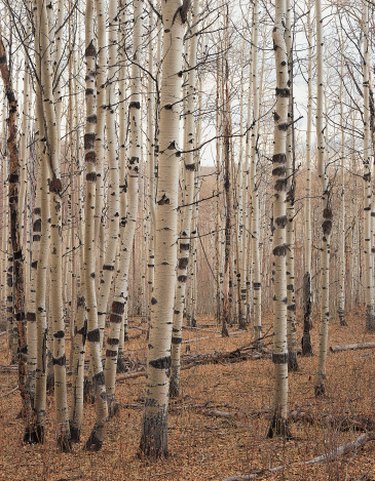
Birch is a dense, durable hardwood that has a pale to reddish color and a straight, uniform grain. After seasoning, birch is dimensionally stable, so floors made with it are unlikely to move. Refinishing birch wood may be more difficult than working with other hardwood floors. Sanding, staining and applying finish to this material takes special care.
Refinishing
Video of the Day
A hardwood floor should be refinished when it develops stains, severe scratches or when the existing finish begins to chip or become dull. Refinishing a heavily-worn hardwood floor requires sanding off the top layer of wood and finish, applying stain if required, then adding a new finish such as polyurethane, shellac or drying oil. This process is labor intensive.
Video of the Day
Sanding Birch
According to Woodworkers Source, birch species are rather difficult to sand. This fairly-hard wood often refuses to produce a smooth surface. Use progressively finer-grit sanding surfaces and work slowly to avoid gouging the wood. Some birch floors may need to be finished up by hand using a very fine-grit sandpaper.
Stain
Birch has a tight grain and very small pores that prevent the wood from evenly taking up stain. Heavily pigmented finishes tend to make birch floors look muddy. Even after staining, birch floors may be prone to scratching and damage to the colored finish, since the wood takes stain shallowly. Avoid staining birch whenever possible.
Considerations
Not all birch hardwood floors need to be sanded for refinishing. According to This Old House, if the floor is not heavily damaged, it can be screened instead. Screening uses a clog-resistant sanding disk and takes off the floor's finish without removing any wood. This prevents the usual sanding problems associated with birch floors. Screening only works on floors without a wax layer, and does not repair floors where the existing wood has been scratched, stained or damaged.